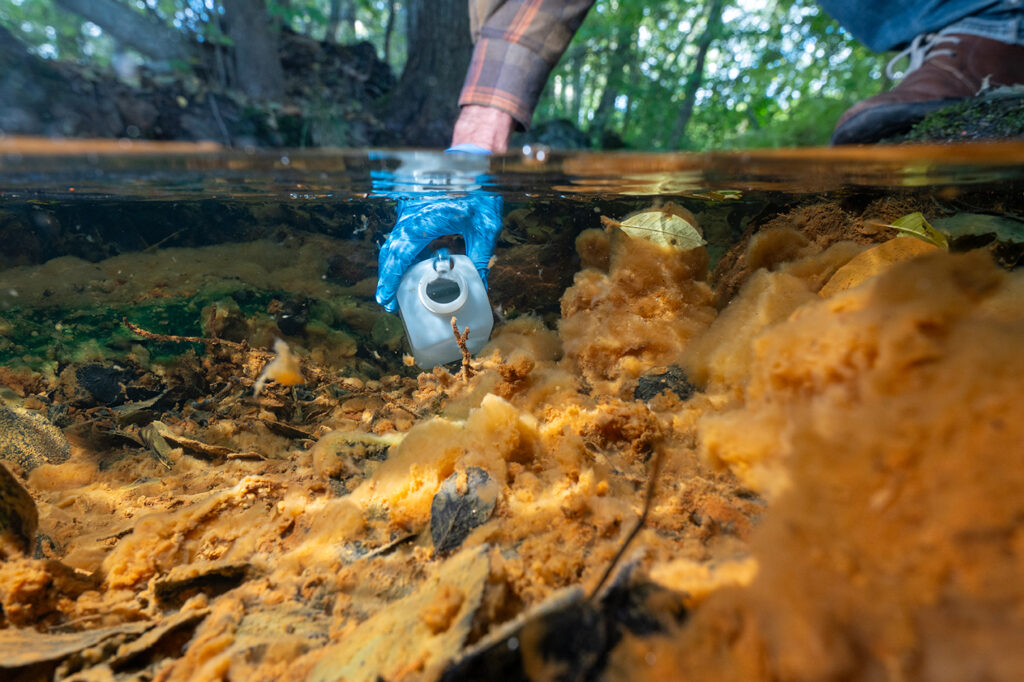Groundwater penetrates up through the soil and forms a spring that is rich in iron. This spring, which is located in the southern Stockholm area, is naturally rust-coloured because of the iron bacteria. We take samples in order to monitor the quality of the groundwater.
Groundwater is the water that fills all cavities in the ground, between gravel and rock and in cracks in the bedrock. Rain and snow slowly seep through the soil layers, which filter and purify the water.
Groundwater is the source of a lot of our drinking water. Groundwater also flows on and replenishes lakes and rivers. But there are clouds on the horizon. Many of our best groundwater reservoirs are in places that are heavily urbanised and extensively developed. Moreover, environmentally hazardous landfills are often located not far away. That is why it is very important to monitor groundwater. Taking samples and analysing the groundwater allows us to detect environmental toxins such as heavy metals, PFAS, pesticides and oil pollution.
The test results help us to trace where the pollution is coming from and take action. Finding caffeine and sweeteners in groundwater may indicate leaking sewage pipes, for example. We are unable to create new water. That is why we have to take care and look after the only water we have.



